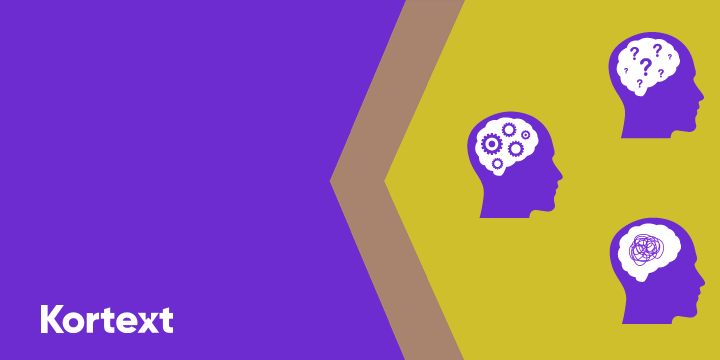Supporting neurodiversity
Neurodiversity refers to the different ways the brain works and interprets information. It highlights what we’ve known all along – people think about things differently, people have different interests and motivations and people naturally have strengths and weaknesses in their learning styles and abilities – and that’s okay!
It’s believed that most of the population are what’s called ‘neurotypical’, which refers to the brain functioning and processing information in the way that’s commonly expected, yet it’s estimated that possibly 1 in 7 people – which equates to 14.29% of the people in the UK – are neurodivergent, meaning that the brain functions, learns and processes information differently.
Neurodivergent learners
With student numbers currently at their highest ever at over 2.6 million students currently enrolled on higher education courses, it can be assumed that there’s a significant number of neurodivergent learners in higher education.
Despite the data suggesting neurodivergence is high, it’s still seen as a barrier that can hinder student experience and student success.
Dyslexia
According to the British Dyslexia Association (BDA), 10% of the British population may have dyslexia, meaning that there are likely to be three pupils with dyslexia in every school class.
It is further estimated that approximately 4% of students in higher education have a specific learning difficulty (SpLD), such as dyslexia.
One future student who is worried about her dyslexia holding her back is 18-year-old Tamzin Bouzad.
Dyslexia is a learning disability which primarily affects reading and writing skills, as well as the ability to process and remember information seen and heard, which can impact the learning and acquisition of literacy skills.
Due to begin studying Law at Bournemouth University in September, Tamzin is aware of the amount of reading she will have to do but is apprehensive due to the judgement she faced for her reading ability in the past.
“No one realised I was dyslexic until I was 15. They’d make me read out loud and I’d read it wrong, and they’d think I was messing around and I’d get told off.
“I’d get told off for writing too slow, and my spelling was atrocious.”
“It made me feel stupid.”
Considering neurodivergence in teaching and learning
Whilst neurodivergence is often a hidden barrier for students, it need not be with a few simple considerations in place – all of which centre on understanding and integrating changes into teaching and learning.
Stress
Stress often exacerbates situations, so ensuring all course information is clearly displayed is very important. For example, we know students will need to do independent reading, but something as simple as sharing how much of a certain text they will have to read for specific lectures will help students manage their time better when it comes to planning out their weeks.
As well as this, making sure that any changes to lectures, reading and deadlines are communicated via available channels with sufficient time will ensure that all students receive the message via platforms they may favour for accessibility and more.
Learning styles
Whilst it’s not common for students to read aloud in higher education, it can still happen. That said, if a student declines, they may not be exhibiting challenging behaviour, they may decline because it will challenge them in a way that will cause distress and discomfort.
Instead, ask for volunteers!
Digital technology
Digital technology has advanced drastically. Once, a classroom essential for all dyslexic students was a yellow sheet of plastic, with or without lines, but students now have a choice.
Instead of writing notes by hand, they can now utilise laptops and tablets to take their notes and, with Kortext, even access core and supplementary reading for their course which comes with its own host of study and accessibility features.
Kortext strives to deliver accessible learning solutions and support the entire student population from its outset. In fact, due to its passionate commitment, Kortext has been awarded gold status and achieved a 100% ASPIRE review score for accessibility.
The company has been a supporter of the ASPIRE project since its inception in 2018.
Some of our accessibility features which can enrich the learning experience for students include:
Text to speech
Kortext users have the ability to convert text to speech with Read Aloud on our App readers, a functionality that Tamzin is excited to use.
“I’m nervous about going to uni with dyslexia because of the amount of reading, but I should be fine with a laptop. I find listening better, so eTextbooks would be good for me because they speak to me.”
This inbuilt functionality is available in both ePUB and PDF files on our native applications.
Styles
Resize or change the font style or colours to suit your needs in ePUB files, including the Open Dyslexic font. The background can also be changed to night mode or dark sepia tone for different reading conditions and preferences.
Screen readers
The Kortext app has a built-in reader or can work with other screen readers such as NV Access, JAWS, TalkBack, and VoiceOver.
Offline reading
The Kortext Arcturus platform is available to use anywhere no matter the internet connection of the device making it portable and easy to use on the go, and free from the distractions that can be found whilst on the internet.
Transcripts
To make our content accessible to as many people as possible, if requested, transcripts of all the audio and video content in the book are available.
No limits
There shouldn’t be any limits to what anyone can achieve in higher education or beyond and there are some very simple changes that can be made to ensure the playing field is as levelled as can be for all students.
To find out how we can help with that, tap here.

